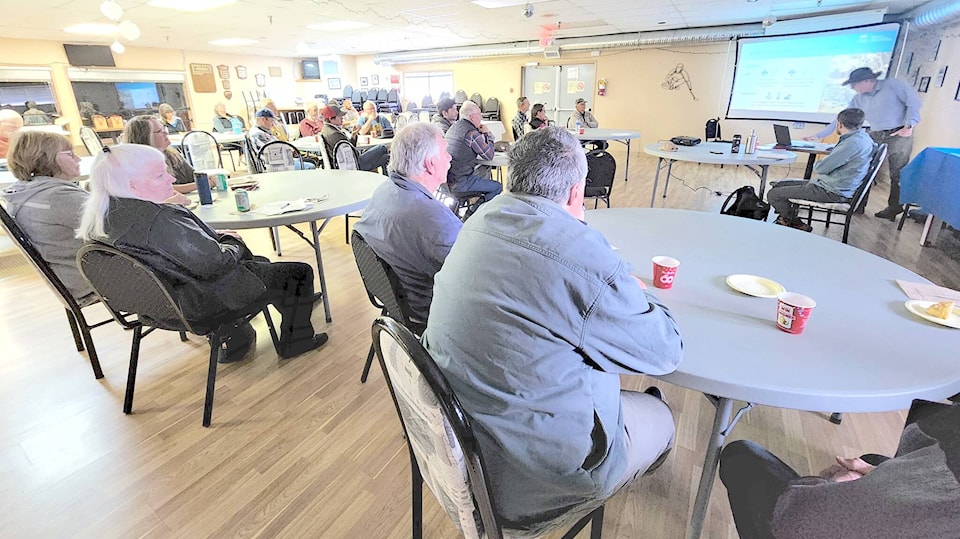A touring workshop on drought management made a stop in Grand Forks to give an update on the latest programs, financial aid and get feedback from people on the ground.
Around 40 people met at the Grand Forks Curling Club on Thursday morning for the Decoding Drought Management workshop to hear from representatives from the Ministry of Agriculture and Food and Ministry of Water, Land and Resource Stewardship on various ways the government, farms and landowners could help make the province more resilient to drought and flood episodes.
It was also a chance for ministry representatives to hear concerns and knowledge from landowners actually living on the land said Mark Raymond, executive director, Extension and Support Services Branch of the Ministry of Agriculture and Food.
On a broad scale, these are meetings for the government to put faces to titles and names, Raymond said, as well as outreach to help farmers and landowners find the resources they need, as well as help navigate applications and program steps.
Ministry of Agriculture and Food staff around the province are the ones organizing the workshops, he said.
“It has a two-fold purpose: to make producers more aware of support programs that we have available, which some are financial aid or income support and others are infrastructure programs to help with water storage and irrigation efficiency,” he said. “The other is more about conservation and help producers understand the regulatory context in which water decisions are made.”
He added the workshops are also for people to tell department representatives how those decisions may have impacted them. If there was a bad experience, or one someone felt a decision was unfair, they wanted to hear about it.
The long-term goal for the province is to be more proactive and minimize impacts to people and their livelihoods, Raymond said. No one in the government wants to harm people’s livelihoods, he said, but in some cases, actions have to be taken to protect habitats, water levels for drinking, fish habitats and even wildfire.
A frequent concern was water restrictions and why they were placed at certain times and locations. Raymond explained he understood the confusion people feel at those times, which is why outreach events like this are held.
“The motivation for myself is to improve communication to help decision-making on all parties, be it producers as well as government parties,” he said. “We try and open those communication channels for the upcoming season, so the vision is we are starting with these in-person workshops and we will hopefully carry on this communication back and forth between the Ministry of Agriculture and producers to make more informed decisions, especially when regulatory action is needed.”
A repeated question among some of the workshop attendees was the role of forestry in drought management. Clear cutting and other logging operations were pointed out as contributing to faster snow melt and less moisture in the ground. Currently, the Ministry of Forests isn’t directly involved in provincial drought management, Raymond said, but the province is looking at more cross-department collaboration, which is why they are reaching out to the public to find out where best to start.
The water aspect of the workshop looked at drought conditions across the province and the state of Grand Forks’ aquifer. Looking at drought maps between 2021 and the end of 2023, it was shown that in most water zones in the province, drought was or is currently being experienced, with conditions worsening in almost half the province. A major reason for this is BC relies heavily on mountain snow for its water. Progressively drier winters, earlier spring freshets and hotter and drier summers have meant water isn’t being replenished as regularly.
There is some good news, Raymond said. Grand Forks’s aquifer is showing steady levels, with gradual recharging from runoff from the Granby and Kettle Rivers that feed it. The West Kootenay Zone, where Grand Forks is located, is showing 87 per cent normal snow levels as of March 1.
Find more on aid programs at these websites:
